We’d like to remind Forumites to please avoid political debate on the Forum.
This is to keep it a safe and useful space for MoneySaving discussions. Threads that are – or become – political in nature may be removed in line with the Forum’s rules. Thank you for your understanding.
The MSE Forum Team would like to wish you all a Merry Christmas. However, we know this time of year can be difficult for some. If you're struggling during the festive period, here's a list of organisations that might be able to help
📨 Have you signed up to the Forum's new Email Digest yet? Get a selection of trending threads sent straight to your inbox daily, weekly or monthly!
Has MSE helped you to save or reclaim money this year? Share your 2025 MoneySaving success stories!
Repointing side wall
Comments
-
It's the same tool. The Yanks call Tuck pointing what we call repointing. Proper Tuck pointing in the UK is much more complex and costs around £200 a square metre.danrv said:
There was an Amtech tuck pointer suggested earlier. Looks similar to a finger trowel.stuart45 said:You might find a finger trowel easier to use, as a pointing trowel can take a bit of getting used to.
What sand have you got?1 -
Have had a go at the wall with 6/1/1. Mix is quite grainy and with the 10mm depth, doesn’t stick too well.
Adding water helps and applying mortar with a basic plastic scraper works best. Some of the perpendiculars are narrow with deep mortar gaps.
The mix would need to be like smooth putty for tidy application with a finger trowel.
The best and quickest way I’m finding is the method used here.
https://www.homebuilding.co.uk/advice/repointing-brickwork
The finish wouldn’t really be bucket handle though. The shape is created more by the brushing.
0 -
Use whatever is best for you. Stick a photo of the job as the work proceeds. In the link he was using a gauging trowel to slap the mortar in with and a wire brush to finish the joints. Probably not the best method for brickwork on a 70's house.
When you mix up mortar by hand it's normally not as good as when it's done in a mixer. It's also a lot harder when the joints are not raked out deep enough.1 -
Ok thanks. Done some pics. Didn’t realize you canstuart45 said:Use whatever is best for you. Stick a photo of the job as the work proceeds. In the link he was using a gauging trowel to slap the mortar in with and a wire brush to finish the joints. Probably not the best method for brickwork on a 70's house.
When you mix up mortar by hand it's normally not as good as when it's done in a mixer. It's also a lot harder when the joints are not raked out deep enough.
upload direct to MSE now.
3rd pic shows a bit of the raking out I’ve done.
I can access most of the wall from the garage roof.
Last pic is a few of the perps I’ve filled and brushed.
Don’t think I’ll use that idea. At least not with a wire brush.
2nd one shows untreated wall. The mortar has worn away and recessed away from the surface over the years.
0 -
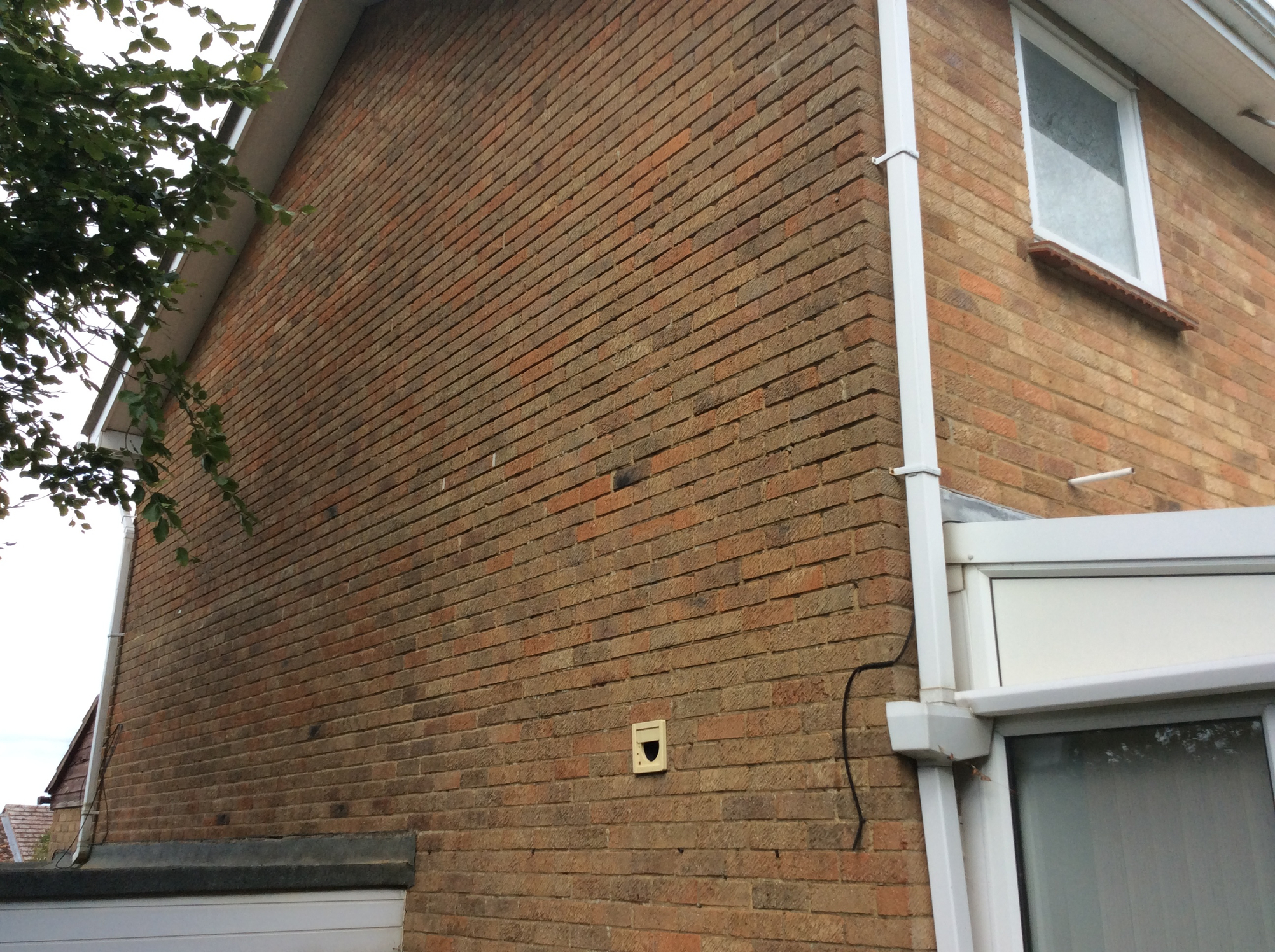
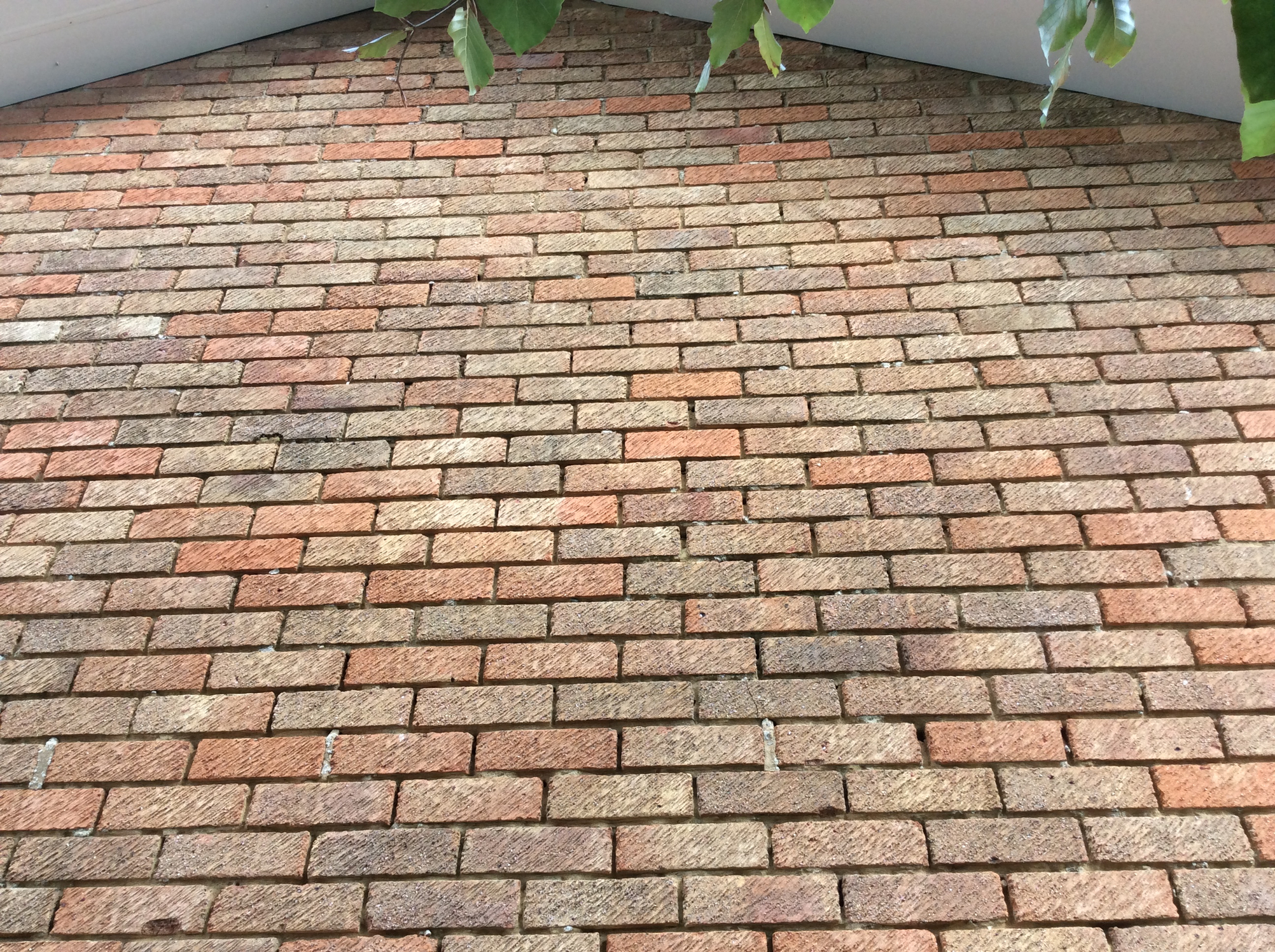
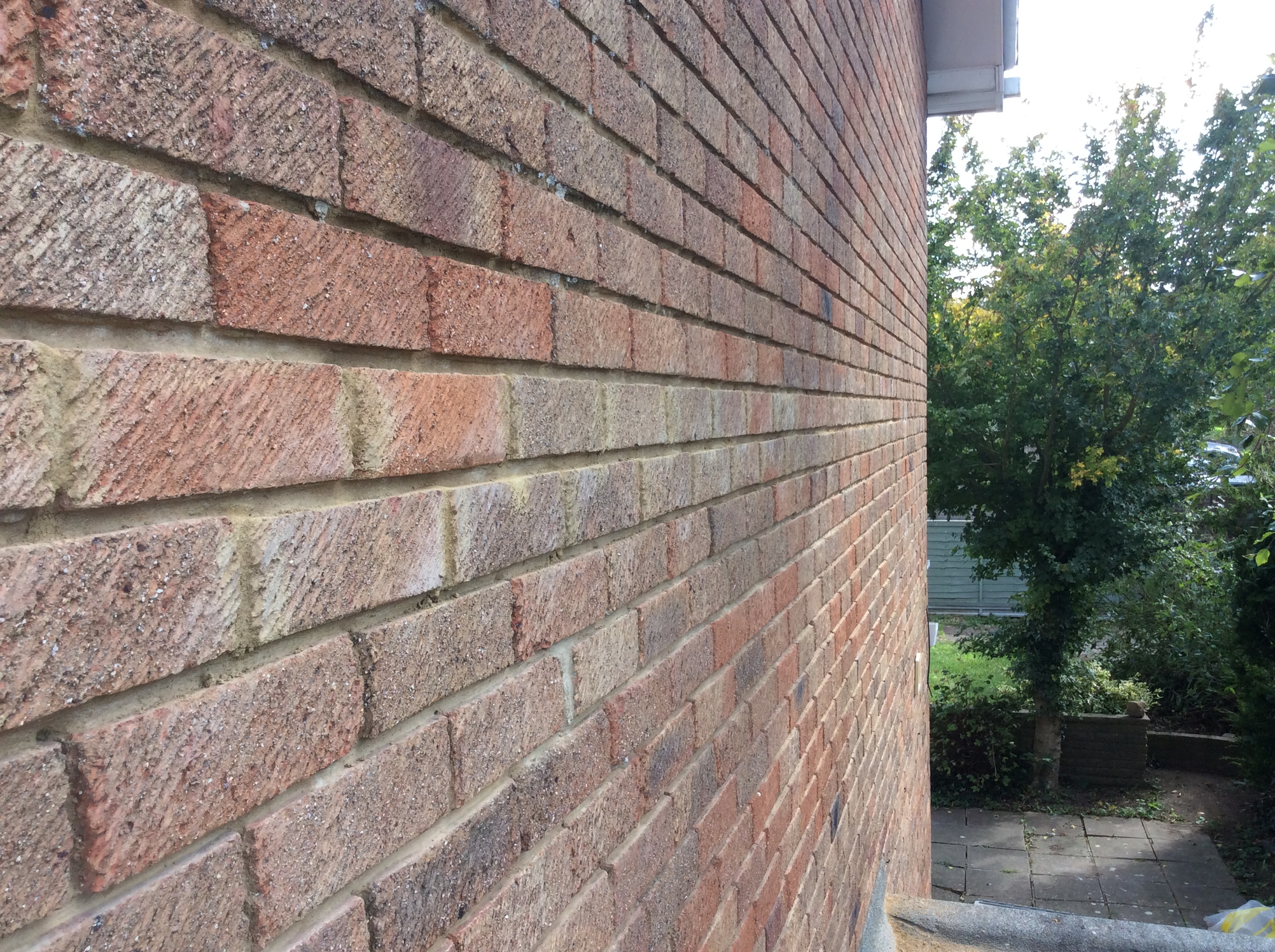
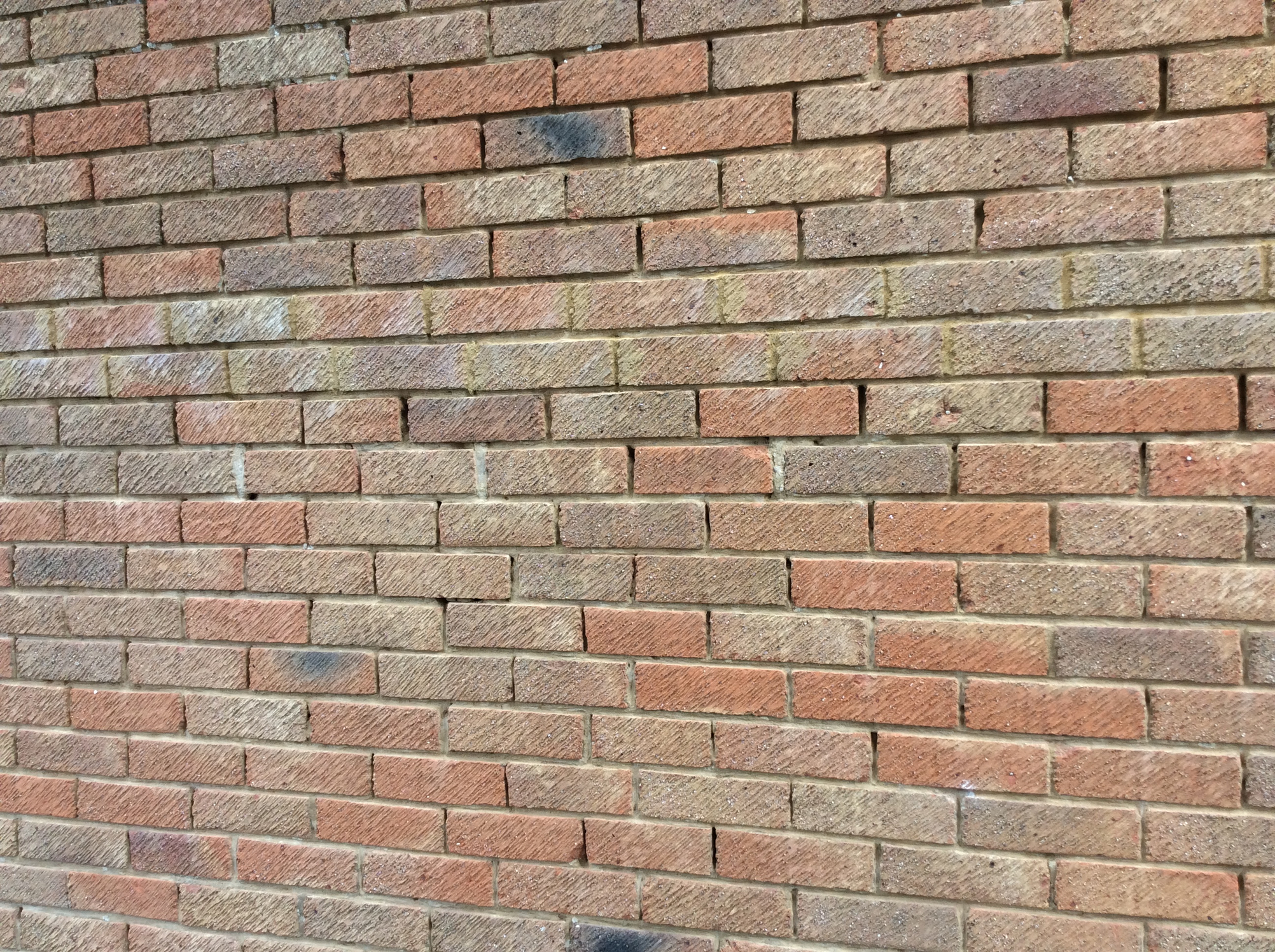
0 -
Thanks for sticking the pics on.
With that type of textured brick it's important to try and keep the facework clean, as they are really difficult to clean after.
That type of house is almost certainly cement mortar with a bucket handle half round finish. It does compact the joints and bring laitance to the surface to form a more weathertight finish. Just use a soft brush to finish off.1 -
Ok thanks.stuart45 said:Thanks for sticking the pics on.
With that type of textured brick it's important to try and keep the facework clean, as they are really difficult to clean after.
That type of house is almost certainly cement mortar with a bucket handle half round finish. It does compact the joints and bring laitance to the surface to form a more weathertight finish. Just use a soft brush to finish off.
Yes, realize now about getting mortar on the textured brick. It may work as I’ve been doing it if I wash off the excess mortar instead.
Will persevere though with getting the mix in the beds without too much on the brick.
0 -
Washing might be a bit tricky on those bricks as it tends to spread the staining. It works OK with smooth engineering bricks, but be careful with yours.1
-
Yes, agree.stuart45 said:Washing might be a bit tricky on those bricks as it tends to spread the staining. It works OK with smooth engineering bricks, but be careful with yours.
Have done some more perps with a slightly stronger mix. 5/1/1 with added plasticiser.
Not sure what it is but it’s transformed the workability of the mortar. It’s now smoother and sticks to the homemade tool and to the beds.
Also followed a cement/lime/sand mixing order.
It definitely helps to make or adapt tools for the job. The perps are mostly 1/8” to ‘1/4” wide and a few gaps go all the way through.
Made this from alloy to fit in the varying mortar gaps. Then I use the Ragni bucket handle tool to shape.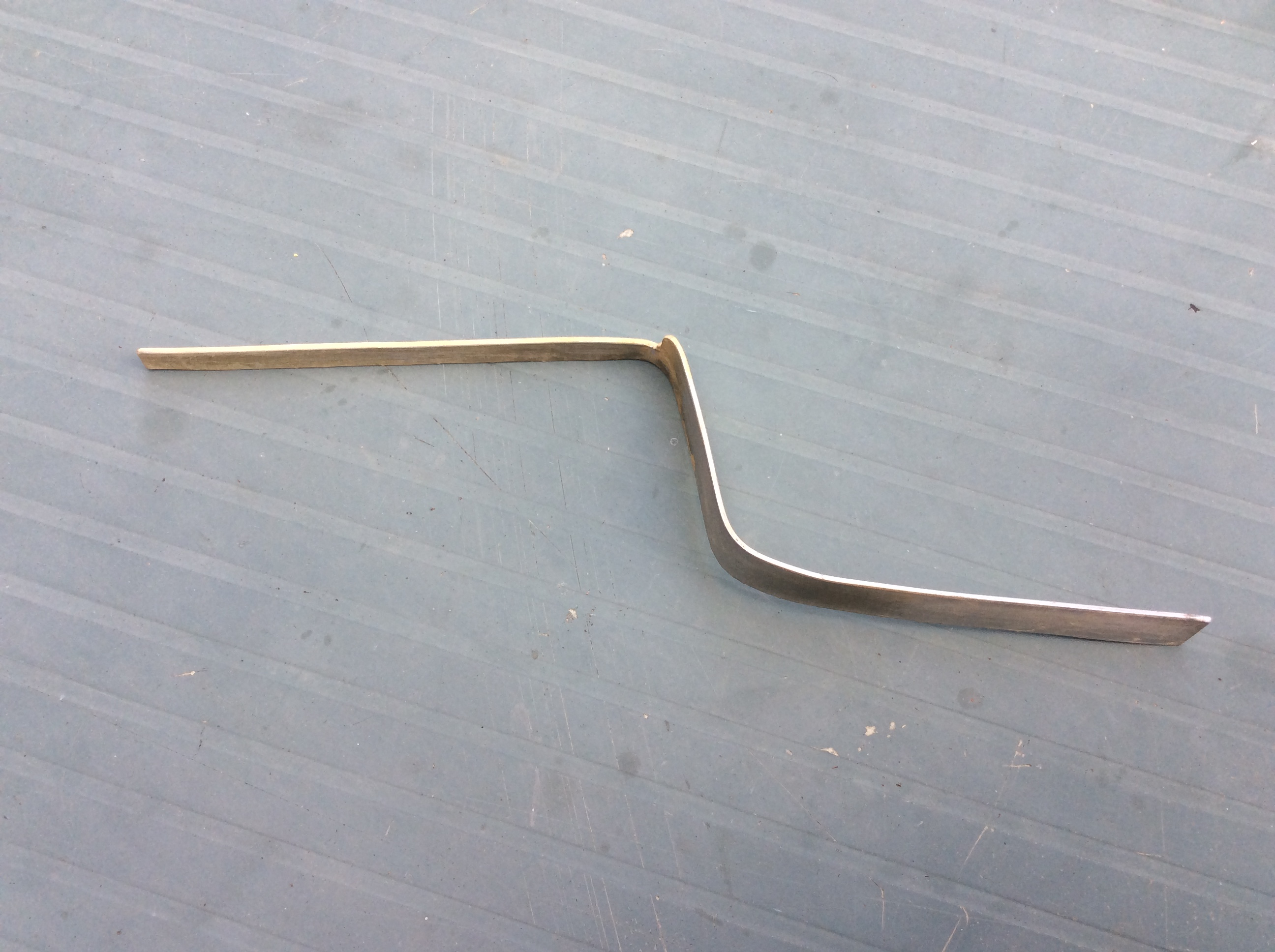
0 -
Glad it's going better for you. With the wet trades(bricklaying, plastering etc) it's getting the feel of the tools that helps a lot. When you first start it can feel really hard, but with practice you soon get more confident. Having the right mortar mix makes a lot of difference. I can really struggle with bricklaying, or pointing if the mix is wrong(poor sand, too wet,too dry, not enough cement or plaz etc).1
Confirm your email address to Create Threads and Reply

Categories
- All Categories
- 352.9K Banking & Borrowing
- 253.9K Reduce Debt & Boost Income
- 454.7K Spending & Discounts
- 246K Work, Benefits & Business
- 602.1K Mortgages, Homes & Bills
- 177.8K Life & Family
- 259.9K Travel & Transport
- 1.5M Hobbies & Leisure
- 16K Discuss & Feedback
- 37.7K Read-Only Boards
